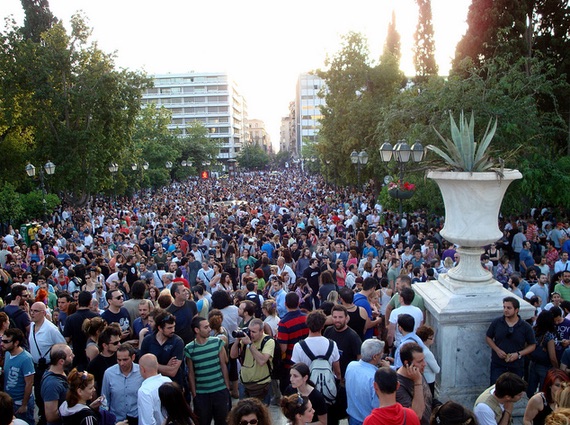Andreas Sartzekis
Posted July 12, 2019

The outcome of the 7 July legislative elections has brought a surprise, which the French media had not foreseen. See our previous article Greece: Between two elections. Certainly, the right-wing New Democracy (ND) party has won a big victory – about 2,250,000 votes and 39.85 per cent (1,526,000 and 28.09 per cent in the September 2015 legislative elections; 1,873,000 and 33.12 per cent in the May 2019 European elections). With 158 seats and leading in most regions, it can form the new government on its own, that was its goal. It is a big success, based on strong support from the media linked to the big bosses, for the heir to the Mitsotakis dynasty.
So, of course, it is a defeat for Syriza, and all the comments on Tsipras’s “lost bet” cannot hide the root cause of the defeat: the immense disappointment created by refusing to break with the troika and maintaining, despite some improvements on social questions, of unemployment, low wages and precariousness.
However, after Syriza’s poor score in the European elections (1,343,000 votes, 23.75 per cent of the votes, against 1,926,000 votes and 35.46 per cent in September 2015), while many “experts” predicted a further fall, it is quite the opposite: with 1,781,000 votes and 31.53 per cent, Syriza has stood up quite well, hence Pasok’s anger yesterday (under the name of Kinal, it got 8.1 per cent, a slight progress) and the bad mood of KKE (Greek PC), which with 299,000 votes and 5.30 per cent, is continuing to lose both in percentages and votes (in 2009, 517,000 votes and 7,54 per cxent). Syriza is in the lead in many popular districts, and in several regions:
![]() all of Crete, Achaia (40 percent, compared to 32per cent for ND!), the working class areas of Attica.
all of Crete, Achaia (40 percent, compared to 32per cent for ND!), the working class areas of Attica.
![]() in town halls lost by the left: Haïdari, Egaleo, Kaisariani.
in town halls lost by the left: Haïdari, Egaleo, Kaisariani.
It can be said that popular mistrust in Syriza was expressed above all by abstention, a phenomenon that is increasing: 42.1 per cent, compared to 36.1 per cent in January 2015. And above all, the local participation figures reinforce this class abstention: often from 66 to 72 per cent participation in the bourgeois suburbs, from 51 to 55 per cent in the working class suburbs (compared to 63 per cent to 67 per cent in January 2015!).
What are the prospects?
The ND was full of voices, siphoning off centrist groups and part of the far right: on the one hand Chryssi Avgi lost his deputies, but another fascist group, Elliniki Lyssi, is doing its job there with its entry into parliament (3.7 per cent). Even if the politician Mitsotakis repeats that he will govern for the union of all the Greeks (but the others?!!), the ultra-liberal programme that the ND wants to apply may push the cursor very far to the right, with a law and order discourse proving the weight of the extreme right in the ND executive (several have been elected).
Faced with this, the left must on the one hand take stock, in particular the anti-capitalist left Antarsya, which received only 23,000 votes and 0.4 per cent and is deeply divided (the split from Syriza LAE/Popular Unity gets 0.28%…).
But above all, it will be necessary to overcome the paradox of seeing the entire anti-memorandum left weaken further so that many young people and workers expressed their hope of resistance by voting Syriza.
What is urgent on the one hand is the revival of building a broad anti-capitalist left that goes beyond simply the Antarsya framework, and on the other hand, the battle, difficult given the weight of sectarianism, to launch united resistance fronts combining revolutionary left, radical, KKE and Syriza (and even Mera 25, with Varoufakis, which is entering parliament).
This article appeared on the International Viewpoint on July 8, 2019 here.
